#Carlo Abarth
Photo

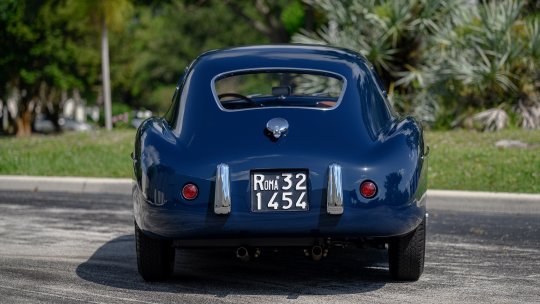

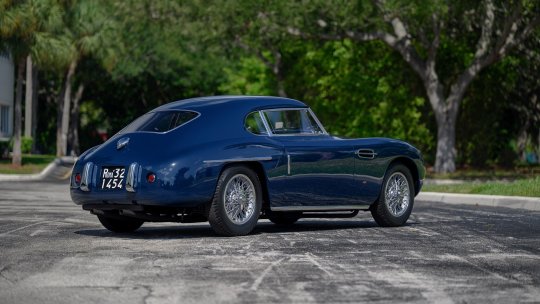


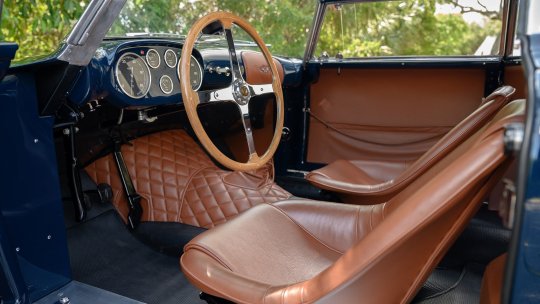
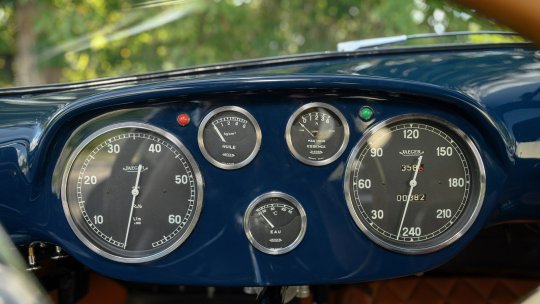
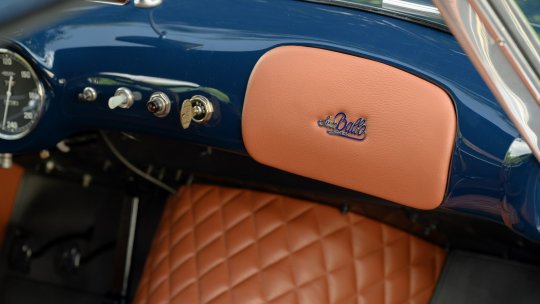
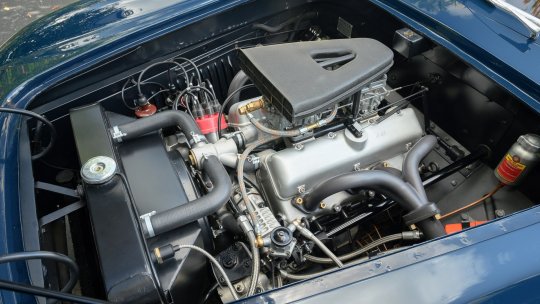
Siata 208 CS ( 1 of 6).
Societá Italiana Auto Trasformazioni Accessori (SIATA) created a marvelous assortment of machinery in its 45-year history under the guidance of the Ambrosini family. Founded by Giorgio Ambrosini in 1926, Siata specialized in performance modifications for Fiats, creating the overhead-valve conversions, multi-speed gearboxes, superchargers, and multi-carb intakes that competitive Italians wanted for their diminutive cars. The Italian auto giant conspicuously ignored—with few exceptions—the high-performance market as the Agnellis concentrated their empire around sensible, reliable, and mass-produced cars of small proportions.Siata received substantial financial assistance from Fiat following the Second World War, and by 1949 they were producing small automobiles which wore custom, house-labeled coachwork. Firmly grafted to Fiat and its engineering, Siata took a giant leap forward with the arrival of Rudolf Hruska in 1950. Hruska had worked in Porsche’s design office before the war and later collaborated with Carlo Abarth on Piero Dusio’s Cisitalia Grand Prix project. Fiat itself plotted its re-entry to the top ranks of Italian performance automobiles in 1950 with the introduction of their two-liter V-8 (dubbed "Otto Vu"), whose development was entrusted to Siata and executed in total secrecy by Hruska’s team.
The unusual oversquare, 70-degree V-8 engine featured all-aluminum castings with wedge-shaped combustion chambers. Induction was through a pair of dual-throat, downdraft Weber carburetors. With its high-revving short-stroke design and 8.5:1 compression ratio, prodigious power was channeled through a four-speed manual gearbox. Hruska planted the engine into a tubular chassis, and this became the basis of Fiat’s 8V.
Debuting at the 1952 Geneva Salon, the 8V caused an absolute sensation perhaps best equated to a meltdown of Italy’s motoring press. For many, the Siata-developed, Fiat-badged supercar defied belief. In particular, the advanced chassis featured a fully independent suspension with coil springs and telescopic shock absorbers at all four corners and was a marvelously sophisticated platform for its time, with supple and predictable handling that amazed drivers accustomed to the rigidly sprung, “flex-framed,” live-axle sports cars of the time.
Approximately 200 Tipo 104 engines were made to supply the 114 8V examples which Fiat ultimately produced. Eighty-five or so surplus engines were thusly returned to Siata, which seized the opportunity to supply them with additional house-made upgrades and implant them into the very chassis from which the earth-shattering Otto Vu had been developed.
The resulting Siata 208 CS was available as an attractive barchetta-like Spider or streamlined berlinetta, which Siata commissioned from a small pool of local coachbuilders including Bertone, Vignale, and Stabilimenti Farina. It is said that Siata openly encouraged the carryover of major styling details which these same companies were providing to Ferrari during the same period.
Perhaps the shapeliest design ever rendered upon the 208 CS, however, was executed by Balbo of Turin. Just nine berlinettas were made, of which only six examples are known to remain extant.
248 notes
·
View notes
Photo

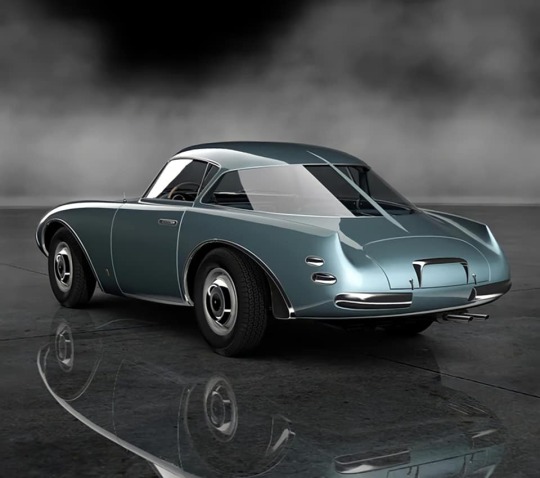
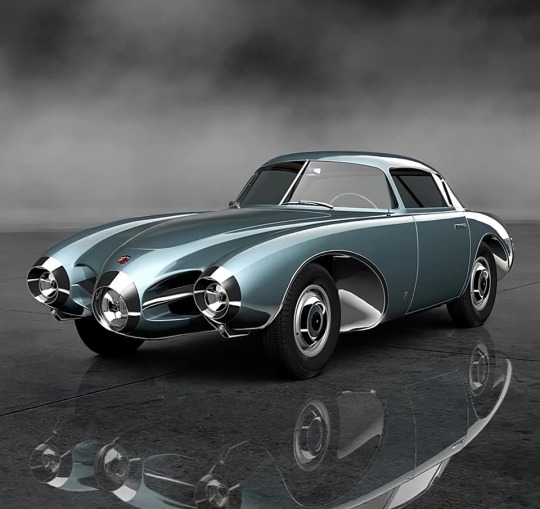
Abarth Fiat Bertone 1500 Biposto 1952. - Conçue par Franco Scaglione, Nuccio Bertone et Carlo Abarth comme pièce unique pour le stand Fiat du salon de l'automobile de Turin de 1952. - source Cars & Motorbikes Stars of the Golden era.
372 notes
·
View notes
Photo

Enzo Ferrari e Carlo Abarth
42 notes
·
View notes
Photo
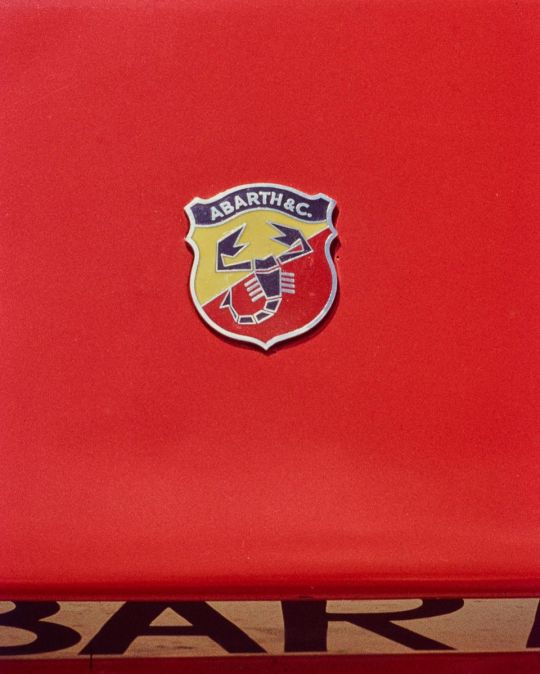
Carlo Abarth | Revs Institute
11 notes
·
View notes
Video
new Abarth brand - the all-electric 500e
#youtube#new Abarth brand - the all-electric 500e A new era for the Abarth brand - the all-electric 500eall-electric 500e Carlo AbarthAbarthAbar
0 notes
Text





Abarth 1600 Coupé Concept, 1969, by Italdesign. An early work by Giorgetto Giugiaro’s newly launched Italdesign using a rear mounted Abarth modified Fiat 1.6 litre engine. It was the last Abarth prototype created before Fiat took over the tuner. Carlo Abarth had hoped to produce the car in a small series but Fiat weren't interested so the project was abandoned. It is one of few Italdesign concepts not painted in metallic grey, a colour that, in Giugiaro's opinion, better underlines the characteristics of a car's lines. With the exception of two Maserati concepts in 1974 and the Alfa Romeo New York Taxi, all Italdesign prototypes, until 2000, were finished in metallic grey.
#Abarth#Abarth 1600 Coupé#Italdesign#1969#Giorgetto Giugiaro#concept#prototype#rear engine#design study#sports coupé
215 notes
·
View notes
Text




Borrow from Classic & Recreation Sportscars FB;
“Abarth 205 Monza is a sports racing coupe designed by Giovanni Michelotti and built by Carlo Abarth in the early 50’s and followed on from the failure of Cistalia in 1949.
Built based upon a box frame chassis with aluminium bodywork by Alfredo Vignale, powered by a tuned Fiat 4-cyl 1089cc (80hp) engine with a 4-speed manual transmission.
Three vehicles were produced with the last one in 1951 displayed at the Turin Auto Show with a larger 4-cyl 1187cc engine. Unfortunately high sales price competed with the new 2.6litre V12 Ferrari 212.”
7 notes
·
View notes
Text
Daily Forza Car #2: 1968 Abarth 595 esseesse
I'm (basically) doing this in alphabetical order for now, until I get a look at the sheer size of the list I'm working with. It's over 1k+ cars, bear with me. And I do aim to do as many of them as possible! Even the 20 billion different Mustang and 911 variants. Speaking of, today's car is far from either of those things. Rather, it's probably the car you think of when you hear "FIAT." Or, rather, a slightly sportier version of it.

Yeah, it's the Fiat 500, or 595 to be precise, "souped up" by Carlo Abarth. One of the very first FIATs he put his name onto, and quite a rarity due to this. A rare version of a quite well renowned early microcar like the 500 is something to cherish indeed, and to be honest, I've quite the soft spot for this lil' thing. It's cute, it's peppy, and oh lord does it shift when you slap an I4 from a motorbike into it.

Shifts just like it does in the various Lupin the 3rd films, actually. Jumps around, slides about, all pretty accurately to the films. And it'll get ya the hell outta sight when you really need it to. The stylish 500 fits Lupin honestly, although if he wanted to be more patriotic with his choice of car, he could've always used a 2CV. I think this one befits him better, though.

This car started a now 60+ year old legacy of tuned Fiats, resulted in an actual race version of the 500 in the 1000TCR, and even lives on today in the modern 500s. More on those tomorrow.
Suffice to say, though, this car speaks for itself.
4 notes
·
View notes
Photo



Recién me llega el recibidoenformadepago de hoy, en este caso el Fiat 131 Abarth, un coche que amo, gracias Carlos Alberto Nizzola por conseguírmelo, está hermoso 😍https://www.facebook.com/groups/670499210081660
2 notes
·
View notes
Text
500 Abarth, lo scorpione velenoso nato da un fallimento
La 500 velenosa di Carlo Abarth
🛑Storia di un fallimento diventato leggenda 🇬🇧 🇫🇷 🇪🇸 🇩🇪 🇮🇱 🇨🇳 translation on site 👇
#boomerissimo #500abarth #abarth #fiat #fiat500 #automobile
Era un’auto dalla cattiveria nascosta, geniale e irrispettosa. Era l’auto di un paese sempre sull’orlo della bancarotta, e che da un fallimento era nata.
Tutte le famiglie hanno le loro figure mitologiche. Alcune sono divinità maestose, che con il loro eroismo hanno cambiato destini, spostato le montagne e il corso dei fiumi. Altre sono figure minori, ma importanti. Magari dei simpatici…
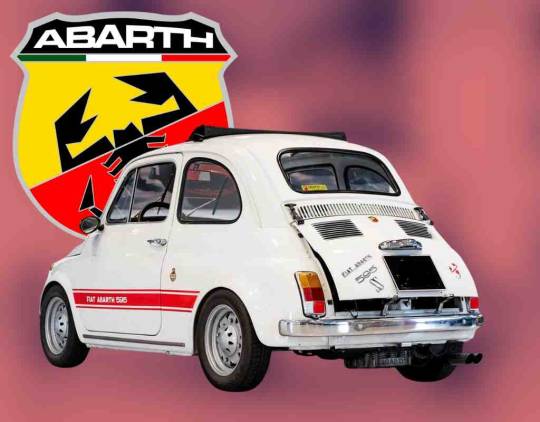
View On WordPress
0 notes
Photo

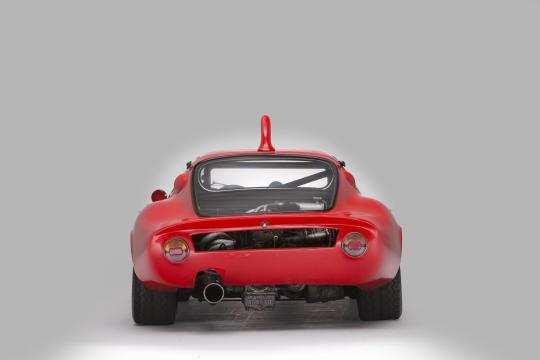


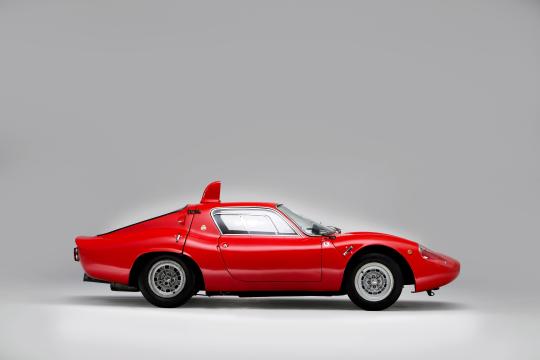


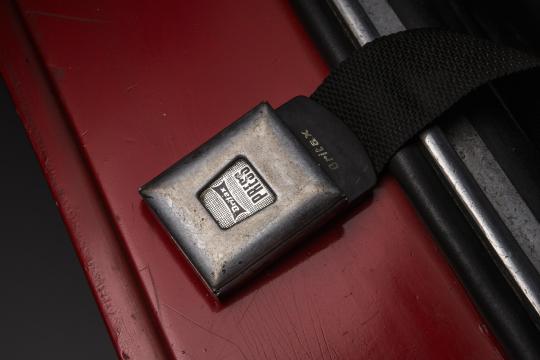
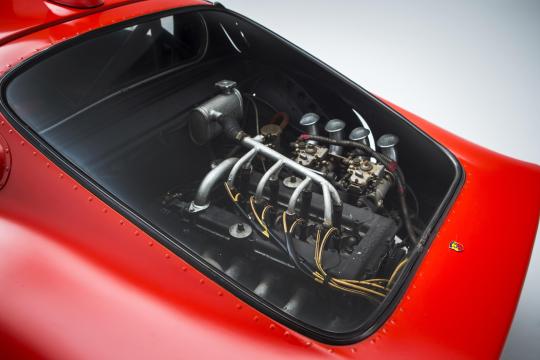
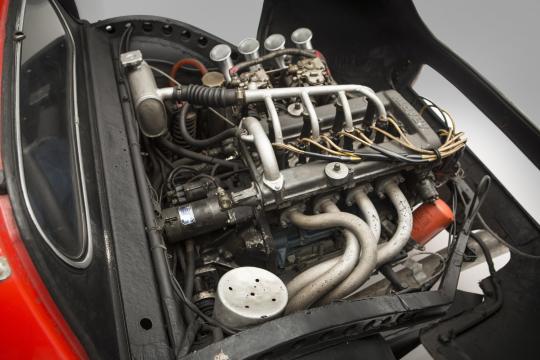
Abarth 1300OT Periscopica Coupé
In 1958, the American Chrysler Corporation pursued an entry into the European motor manufacturing market by buying 15 per cent of the French Simca company's stock from Ford. At that time, however, the dominant shareholder remained Fiat of Turin, and their influence remained distinctively apparent in the engineering and design of Simca cars for several years into the early 1960s. However, in 1963 Chrysler increased its Simca stake to a controlling 64 per cent by purchasing stock from Fiat, subsequently extending that holding to 77 per cent.
Chrysler had no interest in any continuation of the previously successful Simca Abarth and Abarth Simca high-performance car collaboration, which came to a juddering halt. In Turin Carlo Abarth found himself left more or less high and dry, but the supply of basically Simca 1000 chassis floor pans, upon which the sleek and superfast Abarth Simca 1600s and 2000s had been based, left quite a number in stock, as yet unused.
The popular legend is that it was upon these unused Simca platforms that Abarth then founded his 1300cc class Gran Turismo design for 1965 – the OT 1300. Abarth's technical team under Mario Colucci had developed a boxed pressed-steel chassis structure on the modified Simca 1000 floor pan to which allindependent suspension was attached with componentry drawn from the Fiat 850 shelves. The Abarth OT 1300 then emerged, to race for the first time as a prototype in the September, 1965, Nurburgring 500-Kilometre classic.
Driver Klaus Steinmetz hammered the new Coupé home to a fine third-place finish overall and the OT 1300 was up and running into the record books, becoming one of the most successful – and also one of the most distinctive – models that Abarth & C ever produced. The OT 1300's rear-mounted all-Abarth engine was overhung – in best Carlo Abarth-approved style. It was a 4-cylinder unit with twin overhead camshaft cylinder head, using a block with cylinder bore and stroke dimensions of 86mm x 55.5mm to displace 1289cc.
With two valves per cylinder and a 10.5:1 compression ratio, the engine breathed through two twin-choke Weber 45DCOE9 carburettors. Ignition was by two plugs per cylinder, fired by single distributor. Dry-sump lubrication was adopted and the power unit produced a reliable 147bhp at 8,800rpm. This lusty engine, perfected by Abarth's power-unit specialist Luciano Fochi with five main-bearing crankshaft, drove via a five-speed and reverse Abarth transaxle.
Wheelbase length of the OT 1300 was nominally 2015mm, front track 1296mm and rear track 1340mm. It featured moulded glassfibre clamshell-style opening front and rear body sections moulded by Sibona & Basano in Turin, and this pert-nosed Coupé became a familiar sight dominating its class for three consecutive years. Production of the OT 1300 began on May 15 1966 and ended on March 30, 1966, by which time the minimum production number of 50 required by the FIA for homologation as a Gran Turismo model had (allegedly) been achieved.
The most distinctive single characteristic of the OT 1300 Coupé, apart from its huge International success within its class, was its adoption of the Periscopica air-cooling intake on the rear of the cabin roof. Casual onlookers would assume that the periscopelike intake fed intake air into the rear-mounted engine, but this is absolutely not the case. Instead, the water and oil-cooling pipe runs through the cockpit area heated-up the cabin to what was generally considered to be an unacceptable level for endurance racing, and the periscope intake merely blasted cold air down into the cabin to cool the driver himself...
From the OT 1300 Mario Colucci developed the OT 2000 Coupé using the 1946cc 4-cylinder power unit perfected by his colleague Luciano Fochi and with some 215bhp at 7,600rpm that largerengined model was capable of exceeding 165mph in a straight line. In fact all these Abarths with their sleek aerodynamic bodies and light weight really were exceedingly rapid by the standards of the time and within their respective capacity classes.
97 notes
·
View notes
Photo
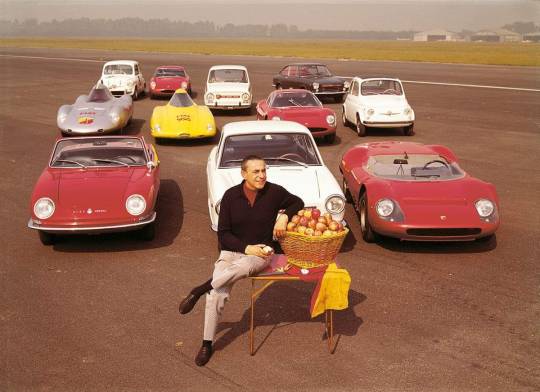
Carlo Abarth avec de nombreuses voitures Abarth version sport 1966. - source Cars & Motorbikes Stars of the Golden era.
125 notes
·
View notes
Text
Fiat Ritmo Abarth 75L Gruppo 2
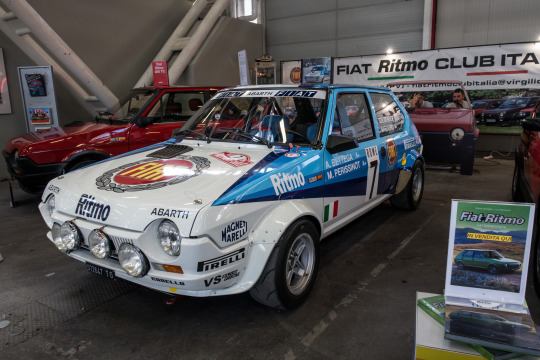
🇮🇹 La Fiat Ritmo Abarth 75L Gruppo 2, un tempo guidata dal leggendario Attilio Bettega, è un'icona del rally d'epoca. Non solo era conosciuta per la sua distintiva livrea Abarth, ma anche per le sue prestazioni sorprendenti sui tracciati impegnativi del rally. L'esemplare fotograto è l'ultima prodotta, perfettamente conservato e certificato ASI Targa Oro. E' un testimone vivente dell'era d'oro dei rally, una macchina che ha catturato l'immaginario collettivo e continua a farlo tra gli appasionati nel 2023.
🇬🇧 The Fiat Ritmo Abarth 75L Group 2, once driven by the legendary Attilio Bettega, is an icon of vintage rallying. It was not only known for its distinctive Abarth livery but also for its surprising performances on the challenging rally tracks. The specimen photographed is perfectly preserved and certified with the ASI Targa ORO, making it a living witness of the golden age of rallying, a machine that has captured the collective imagination and continues to do so among enthusiasts in 2023.


🇮🇹 L'auto si distingueva per il suo motore da 1500 cc, capace di erogare 160 CV, un valore impressionante per l'epoca. Tra le modifiche tecniche più rilevanti, spiccano il collettore di aspirazione Alquati, l'iniezione KugelFischer, il carter secco con pompa di recupero e un differenziale autobloccante calibrato al 25% La vettura si è distinta in numerose competizioni, lasciando il segno in particolare durante il Rally di Monte Carlo del 1979, dove Bettega, nonostante un problema al motore, dimostrò il potenziale della Ritmo Abarth 75L Gruppo 2. L'anno successivo, al Rally di Monte Carlo del 1980, Bettega e la sua Ritmo si fecero notare nuovamente, conquistando un impressionante sesto posto nella classifica generale, un risultato significativo considerando la competizione con vetture del Gruppo 4. FIAT RITMO CLUB ITALIA: https://www.fiatritmoclubitalia.it/
🇬🇧 The car stood out for its 1500 cc engine, capable of delivering 160 HP, an impressive figure for the time. Among the most significant technical modifications, the Alquati intake manifold, the KugelFischer injection, the dry sump with recovery pump, and a self-locking differential calibrated at 25% stood out.
The vehicle distinguished itself in numerous competitions, particularly during the 1979 Monte Carlo Rally, where Bettega, despite an engine problem, demonstrated the potential of the Ritmo Abarth 75L Group 2. The following year, at the 1980 Monte Carlo Rally, Bettega and his Ritmo made their mark again, securing an impressive sixth place in the overall standings, a significant result considering the competition with Group 4 cars.
#FiatRitmoAbarth#Group2#AttilioBettega#VintageRally#RallyIcon#ClassicCar#ItalianRacing#ASIGoldPlate#MonteCarloRally#RallyHistory#MotorsportLegacy#1979Rally#1980Rally#Rallying#AbarthLivery#RacingHeritage#RallyEnthusiasts#HistoricRally#RallyLegends#Group4Competition
1 note
·
View note
Text
0 notes
Text
Abarth 595 feiert 60. Geburtstag
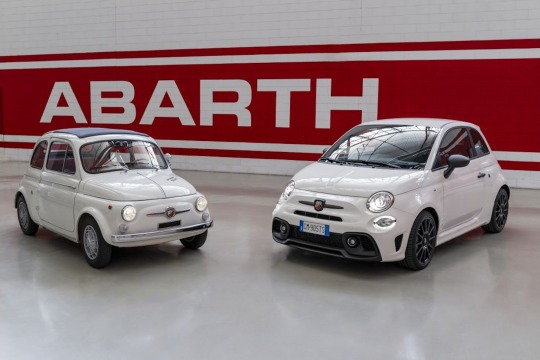
Leistungsgesteigerte Version
Vor genau sechzig Jahren, im September 1963, überraschte Carlo Abarth die Fans des Cinquecento mit einer leistungsgesteigerten Version: Sein Modell 595 basierte auf dem seit 1961 gebauten Fiat 500 D. Die namensgebende Ziffer ist ein Verweis auf das Kernelement von Abarths Tuningmaßnahmen: Der in Österreich geborene und in Turin lebende „PS-Zauberer“ vergrößerte den Hubraum von serienmäßig rund 500 auf 595 Kubikzentimeter. Damit stieg die Leistung von 13 kW (17,5 PS) auf 20 kW (27 PS).
Read the full article
0 notes
Text




Abarth Alfa Romeo 1100 Monoposto Record Car, 1957, by Pininfarina. Carlo Abarth placed great emphasis on breaking speed and endurance records. Understanding the importance of aerodynamics, he collaborated with the Pininfarina. Abarth created a record-breaking single-seater using the Giulietta's 4-cylinder DOHC engine. In order to qualify for class G, he reduced the engine displacement from 1298 to 1088cc. On May 18, 1957 the Alfa Romeo-powered record car broke 6 records before a blow-out brought the session to a premature end.
#Alfa Romeo#Abarth#record car#Abarth Alfa Romeo 1100 Monoposto#Pininfarina#aerodynamic#monoposto#single seater#speed record#DOHC#1957
150 notes
·
View notes